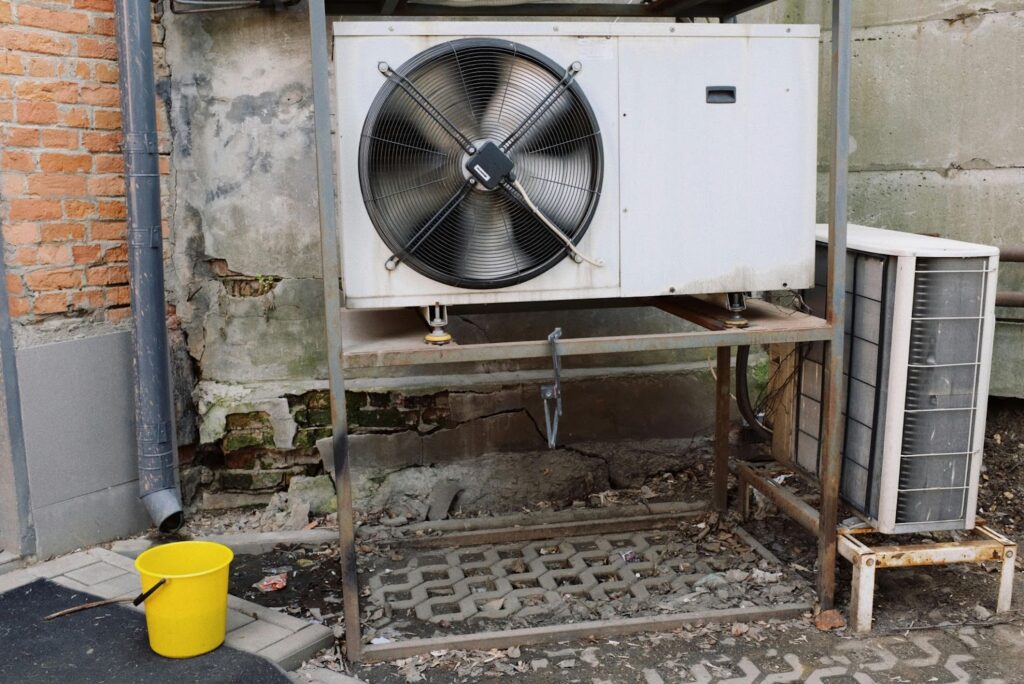Older air conditioning units often present homeowners with the challenge of maintaining efficiency without overspending on repairs or energy bills. While replacing an old system may eventually become necessary, many households seek ways to keep their units functioning reliably for as long as possible. Regular maintenance, thoughtful care, and small improvements can go a long way in preserving performance while also reducing costs. We will explore practical, budget-friendly approaches that extend the life of older AC systems, ensuring they continue to provide comfort during hot weather without draining finances unnecessarily.
Practical Ways to Maintain Efficiency and Save Costs
1. Prioritize Regular Filter Replacement
One of the simplest yet most impactful steps in maintaining older AC units is ensuring that the filters are changed consistently. Filters trap dust, pollen, and other particles, preventing them from clogging the system. Over time, a clogged filter restricts airflow, causing the AC to work harder than necessary. This not only increases energy consumption but also places additional stress on already aging components, potentially leading to expensive breakdowns.
For cost savings, it is wise to check filters monthly during peak usage and replace them every 60–90 days, depending on usage and environmental conditions. A clean filter not only helps lower utility bills but also improves indoor air quality, creating a more comfortable living space. By making filter replacement a habit, homeowners can avoid unnecessary strain on their older unit and keep it functioning at a higher efficiency for a longer period. Companies like Arctic Air Systems, Inc. also emphasize the importance of this simple yet effective step as part of maintaining long-term system performance.
2. Clean and Maintain the Outdoor Condenser Unit
The outdoor condenser is vital to the efficiency of an air conditioning system, yet it is often overlooked in regular maintenance. Leaves, dirt, and debris can accumulate around and inside the condenser, blocking airflow and forcing the system to overexert itself. This can result in higher electricity bills and greater wear on critical parts. For older units, keeping the condenser clean becomes even more crucial, as the machine may already be operating with reduced efficiency due to its age.
Homeowners should gently clean around the unit, trim nearby plants, and remove any blockages. Using a soft brush or hose to clean the fins can also help improve airflow. While professional servicing is sometimes necessary, taking basic steps at home can minimize costs and enhance performance. A well-maintained condenser ensures that the AC doesn’t struggle unnecessarily, ultimately prolonging its life and reducing the frequency of costly service calls.
3. Optimize Thermostat Settings
Another cost-saving tip lies in using your thermostat more efficiently. Many older air conditioning units struggle to maintain very low temperatures during the peak summer months. Instead of setting the thermostat drastically low, maintaining it around 24–26 degrees Celsius can help the system work more efficiently without unnecessary strain. Additionally, homeowners should consider using programmable or smart thermostats, if possible, as these allow for automatic adjustments when no one is home.
Even with older units, pairing them with upgraded thermostat technology can lead to noticeable energy savings. By optimizing usage schedules and avoiding excessive temperature drops, the AC can operate steadily without cycling excessively, which reduces both energy costs and wear on components. This small adjustment in thermostat habits can significantly impact the long-term expenses associated with an older unit, allowing households to enjoy consistent cooling while keeping their bills under control.
4. Seal Leaks and Improve Insulation
Older air conditioning units often work harder than necessary because cool air escapes through leaks in ductwork, windows, or poorly insulated areas of the home. This not only drives up utility bills but also shortens the unit’s lifespan, as it must run longer to maintain comfortable temperatures. Sealing leaks around doors, windows, and ducts can significantly improve efficiency. Weatherstripping and caulking are affordable options that homeowners can apply without professional help.
Adding insulation in attics or walls can further prevent cool air loss, helping the AC system cool the home more effectively with less effort. For older units, reducing the workload is key to prolonging their service life. By addressing leaks and insulation gaps, homeowners can reduce cooling costs, extend the lifespan of their system, and improve the comfort of their indoor environment without incurring significant expenses.
5. Schedule Routine Professional Tune-Ups
Although it may seem counterintuitive to spend money on maintenance, investing in periodic professional tune-ups can prevent major repair costs later. Older air conditioning units are more prone to breakdowns if minor issues are left unaddressed. During a tune-up, technicians typically check refrigerant levels, clean coils, test system controls, and ensure all parts are functioning correctly. These preventive measures often uncover problems early, before they escalate into expensive repairs or total system failures.
While homeowners can handle basic cleaning and care, professional maintenance ensures that the system operates as efficiently as possible for its age. Scheduling a tune-up at least once a year, preferably before peak summer use, is a smart way to prevent unexpected breakdowns. In the long run, this habit saves money by extending the unit’s lifespan and keeping energy bills lower through improved efficiency.
Maintaining older AC units does not have to result in excessive expenses if homeowners take the right preventive steps. From simple measures, such as replacing filters and cleaning condensers, to more strategic approaches, including optimizing thermostat settings, sealing leaks, and scheduling tune-ups, there are numerous ways to extend the life of an aging system. These tips not only lower energy bills but also reduce the likelihood of costly breakdowns. By staying consistent with maintenance and reducing unnecessary strain, households can continue relying on their older AC units while keeping expenses under control.




